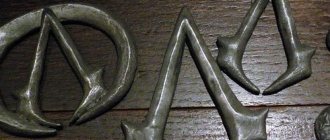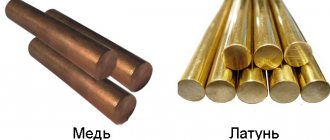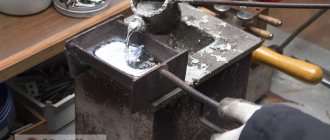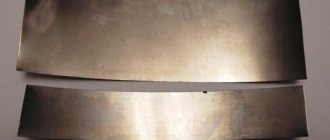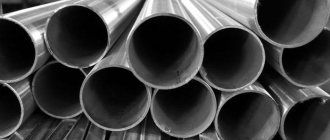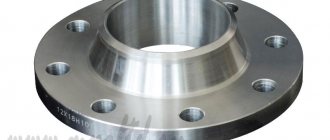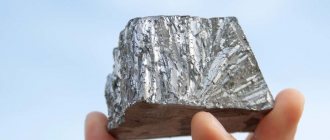Since this site is devoted to metallography, it is natural that here we are interested in the use of Wood's alloy in metallographic preparation , i.e. sample preparation. How is it used and what is its structure?
Wood's alloy is presented on many websites on the Internet. As a rule, the information on them is repeated. The composition, physical properties, history of creation are given. Its low melting point is noted. Mention is made of other low-melting alloys. According to Wikipedia, Wood's alloy is a heavy fusible alloy, invented in 1860 by the English engineer Barnabas Wood. Melting point 68.5 °C, density 9720 kg/m³. Composition (wt.%): tin - 12.5; lead - 25; bismuth - 50; cadmium - 12.5. It is used in precision casting, in bending operations of thin-walled pipes, as lost-wax rods in the manufacture of hollow bodies by electroforming, for pouring metallographic sections , in fire alarm system sensors, as a low-temperature heating bath in chemical laboratories, etc.
The metallographic applications and structure of Wood's alloy are little discussed on the Internet. There are no illustrations either.
Origins of the alloy
This low-melting alloy of heavy metals owes its appearance and name to the American dentist Barnabas Wood, who discovered its composition in 1860. It should be noted that the very fact of obtaining a low-melting alloy was not something unique, since back in 1701 Newton obtained a similar alloy, but without the use of cadmium. Thus, Newton's alloy consisted of 50% bismuth (Bi), 31.2% lead (Pb) and 18.8% tin (Sn).
In Wood, we have about 50% Bi, about 25% Pb, and 12.5% Sn and, attention, cadmium (Cd). True, Newton's alloy has a melting point of 97 degrees Celsius, and Wood's alloy - about 67. Wood had problems with lead and tin, but apparently for some reason there were no problems with cadmium, so he replaced lead with the latter and tin. And so an alloy was obtained, which at normal temperature is in a crystalline state, but already becomes liquid in hot water
[contents]
(see video).
Apparently, it was the relatively low melting point that made this alloy and its inventor so famous. After all, before this, the well-known low-melting alloys Rose (1772) and D'Arcet (1775) had a melting point of 95 degrees Celsius. A reduction in the melting point by 26% undoubtedly provided the opportunity for very significant energy savings, with all that entails, especially taking into account the areas of application of Wood's alloy.
Soldering and tinning - “wood alloy”
Among radio amateurs and electronics engineers, Voodoo alloy has found application for soldering and tinning, and here's why. Tinning, as we know, involves applying a thin layer of tin to another metal, thereby protecting the metal from oxidation and corrosion. And as we learned above, Wood's alloy is an alloy containing tin. In addition to its fusibility, Wood's alloy has good fluidity, which allows it to spread evenly over the surface and fill the slightest cracks. In order to tinning tracks on a printed circuit board, you need: water, grains or rods of the alloy itself, citric (or soldering) acid. Tinning with Wood's alloy occurs as follows (see the video, although it talks about Rose's alloy, but it is also suitable for Wood's alloy with a little clarification):
1. Pour water (or glycerin) into a container, heat it, measuring the temperature, bring it to the melting point temperature, i.e. about 68.5 degrees Celsius.
2. Add a little citric acid to hot (very hot, but not necessarily boiling) water.
3. Then a pre-cleaned board is placed in a container, which needs to be tinned, and several pieces of Wood’s alloy are laid out on the copper tracks of the board. The water is heated, the alloy heats up and turns into a liquid state.
4. Using a tampon, or better yet, a wooden or plastic spatula, tinning the tracks is done by rubbing drops of liquid alloy along the tracks of the board.
5. After tinning, cover the board with rosin (flux) and wash it.
The described tinning method is hot, with coating applied by rubbing. Another hot application method is immersion. But in this case, of course, an alloy bath is used, for which the required amount of raw materials is much greater than for the grinding method.
When soldering, or rather desoldering elements from boards - processors and microcircuits, connectors and other parts - Wood's alloy is good because its melting point is much lower than the melting temperature of the plastic parts' housings. Therefore, there is no need to fear that the plastic case will be damaged during desoldering (or soldering). Of course, all soldering operations in any case must be done as carefully and carefully as possible. This alloy can be used to solder various metals and alloys (copper, nickel, aluminum, bronze and brass), as well as products made of precious metals.
In general, Wood's alloy greatly facilitates the tinning process, which is very important for beginners in this business.
Application of Wood's alloy in sample preparation
For metallographic examination it is necessary to make a thin section, i.e. the surface of the sample, which is viewed through the microscope, must be a mirror. If the sample is large enough, processing it is not a problem. After cutting, it is cleaned on a grinding wheel, then using sandpapers, pastes and finally polished. This results in a mirror surface. But what to do if you need to see, for example, the structure of a wire in cross section, or a thin (several micrometers) layer on a cross-section of a sample, or the structure of a metal powder? You can't just polish it like that. The wire will bend if you apply force during processing, the powder must somehow be converted into a compact material, and the thin layer will “collapse”, i.e. will not be flat, but will turn into a rounded shape and will not be visible through a microscope. This is shown in Figure 1.
Figure 1. Sample edge collapse; 1 - edge of the sample, which is below the focus; 2 - area in focus; 3 - area located above the focus; 2000s
Therefore, the sample area must be artificially increased. To do this, a mandrel (a ring about 1 cm high) is placed on a copper plate, a sample is placed inside it, and the free space is filled with molten Wood’s alloy. Since its melting point is low, the structure of the sample will not change as a result. If the sample is a low-melting alloy, then instead of Wood's alloy, plastics or epoxy resin are used, which harden at room temperature. An example of filling a sample with Wood's alloy and plastic is shown in Figure 2. With this method of preparing a thin section, the edge of the sample will be clearly visible.
| A | b |
Figure 2. Sample embedded in Wood's alloy (a), plastic (b).
A sample made with filling will also be “in sharpness” over the entire surface (Fig. 3).
Figure 3. Sample prepared with Wood's alloy casting (carbon steel, compression plasma treatment ); 2000s
Brief characteristics of the alloy
Wood's alloy is produced in the form of silver-white round rods or droplet granules. Tensile strength is about 45 MPa, elongation 7%, Brinell hardness 10.5 units, density 9720 kg/m3. The shelf life of alloy ingots is 3 years.
Metallographic studies of the alloy show that the components of which it consists do not dissolve in each other and do not form chemical compounds. The structure of the alloy is eutectic, including light dendrites of the solid solution containing bismuth, and dark complex eutectic (containing all four components).
Phase and chemical composition of Wood's alloy
X-ray data confirm that there are no chemical compounds between the components in Wood's alloy. The X-ray image contains interference lines of the metals that make up the alloy. Below is an X-ray diffraction pattern of Wood's alloy, taken on a DRON-3 diffractometer using copper radiation, as well as the results of its interpretation.
Figure 5. X-ray diffraction pattern of Wood's alloy .
Scanning electron microscopy (SEM) can be used to determine which elements are present in an alloy. In this case, you can install the composition at a certain point on the surface. Below is shown the composition of the alloy in two areas - in the light (in a scanning microscope it looks light gray) and in the dark. In the light area, only bismuth was detected. There is 50% of it in the alloy, which means the light dendrites are bismuth. All 4 elements that make up the alloy were found in the dark areas.
Figure 6. Wood's alloy composition in the light area (marked with a red marker).
Figure 7. Wood's alloy composition in the eutectic region.
The structure of Wood's alloy looks interesting after repeated use? Such an alloy is contaminated, so it is difficult to say what exactly its composition is (and there is no need!). But you need to know what it looks like. Since the alloy is cast, it contains dendrites. The light dendrite may be bismuth. Dark - possibly lead-based, but we can say for sure only after elemental analysis.
| A | b |
| V | G |
Figure 8. Dendrites in “dirty” Wood’s alloy : a - bright field, b, c, d - differential interference contrast.
Where else is Wood's alloy used?
There is a wide range of applications for material with the properties of Wood's alloy. This is primarily its technological properties, which include the ability to remove the alloy with hot water. For example, an application is the method of bending pipes with thin walls, which, when bent without special means, will be deformed, i.e. will wrinkle into at least an uneven corrugation. To prevent such deformation, the pipes inside are filled with an alloy that inhibits corrugation. Then, after bending the pipe, the alloy is easily removed, flowing out when heated. For the same reason, the alloy is also used in electroplating, where it fills cavities in metal products.
Another technological purpose of the alloy is precision casting, i.e. such casting in which the resulting dimensions must be observed very accurately, even taking into account the heat shrinkage of the casting alloy. Wood's alloy has very low shrinkage.
The alloy is also used for scientific purposes. It is used to obtain metallographic samples when the sample itself is very small and inconvenient for grinding and polishing. Then it is filled with Wood's alloy to a size that allows processing of microsections. In addition, the alloy is known to be used in chemical laboratories to create a low-temperature heating bath.
It is known that parts made from Wood's alloy can also be found in sensors that respond to temperature, as a rule, these are fire alarm sensors.
It is known that Wood’s alloy also traveled to space in 1976 at the Salyut-5 orbital station, where, as part of a technological experiment codenamed “Sphere,” cosmonauts B. Volynov and V. Zholobov acted as metallurgists, studying the solidification process liquid metal under zero gravity conditions.
Application
The scope of application of Wood's alloy is limited. This is due to its characteristics. It is used in the chemical and technical industries.
It is used when bending pipes with thin walls. This is due to the fact that pipes can become deformed or break during simple bending. Wood's alloy is used to fill the pipe cavity. The product is bent to the required angle. The material from the inside is removed when the pipe walls are heated.
Precision casting is another area where Wood's mixture is used. The process involves the production of high-precision parts that do not change dimensions during shrinkage.
This low-melting material is often used for chemical purposes. In laboratories, it is used to create low-temperature baths for heating reagents. It can be seen in fire safety sensors.
It is most often used as solder, for which it is necessary to use low-power electric soldering irons. Thanks to this, overheating of the solder can be avoided and the viscosity of the molten alloy can be maintained. If you need to work with small parts, it is recommended to use a heating tool with a thin tip. This way you can reduce solder consumption and not damage parts. If there is too much solder, the quality of the connection will deteriorate.
When working, you need to make precise and uniform movements. However, you should not delay the soldering process, since the alloy hardens quickly. The finished connection has a high fragility index.
Since the mixture becomes toxic during heat treatment, soldering is carried out in a ventilated area. In addition to this, safety glasses are used, which will protect the mucous membrane of the eyes from fumes of melting metal. A respirator is also used. It protects the respiratory tract from toxic substances that are released during smelting. To avoid burning your hands, you need to use protective gloves and tweezers.
Application features and differences from analogues
As already noted, Wood's alloy is not the first and not the only similar alloy with a similar composition. The most famous analogue is the Rose alloy. However, the Rose alloy has a higher melting point, which is generally not critical for modern soldering technology, but requires the use of glycerin for heating. Glycerin, when heated at high temperatures, evaporates intensely and smokes.
The only significant advantage of Rose's alloy is that it is non-toxic, since it does not contain the carcinogenic toxin cadmium.
The toxicity of Wood's alloy is its main drawback, which determines the need for special safety measures, consisting of monitoring maximum permissible concentrations and organizing ventilation during operation.
Soldering methods
To desolder a connector or part from a board without overheating, you need to tin the contacts with a low-melting material.
The final melting point will be higher than that of Rose in its pure form, since it is mixed with solder on the board, which has a different composition and characteristics. (melting at 270 °C)
The location of work is important. For example, a board can be very heat-intensive due to its thickness. The heating time and power should be longer than that of a lighter board.
The motherboard from a computer will have to warm up longer than a small motherboard from a mobile phone due to the greater multi-layering and thickness of the PCB.
First, flux is applied to the contacts of the part to be soldered. A few granules of low-melting solder are added. There are several soldering techniques.
Working with a soldering iron
You need massive stings: mini wave, hatchet.
The soldering iron temperature can be kept within 230°C, for example 200°C.
The contacts of the part must be tinned with a low-melting alloy, after applying flux.
A drop of solder forms on the contacts, which can be easily heated with one soldering iron at low power.
The result of soldering work.
How to desolder a USB connector with one soldering iron and Rose
Fast and safe soldering with one soldering iron and low-melting solder.
More details
Soldering with a hairdryer
The hairdryer is set to a temperature of approximately 120 - 170 °C with medium air flow.
The granules gradually melt and mix with the contacts. It is better to adjust them with tweezers at the soldering site so that the solder is better distributed.
It is necessary to thoroughly warm up the soldering area. Gradually, as the temperature rises, the part will begin to desolder. This will be noticeable when a glare appears on the solder.
Result of low temperature soldering.
Combined method
A hairdryer on top of the soldering area is needed for an auxiliary tool, at 100°C, and a soldering iron is used to solder parts with Rose alloy at a temperature of 200°C.
After soldering the part, it is necessary to clean the resulting solder mixture using braid.
